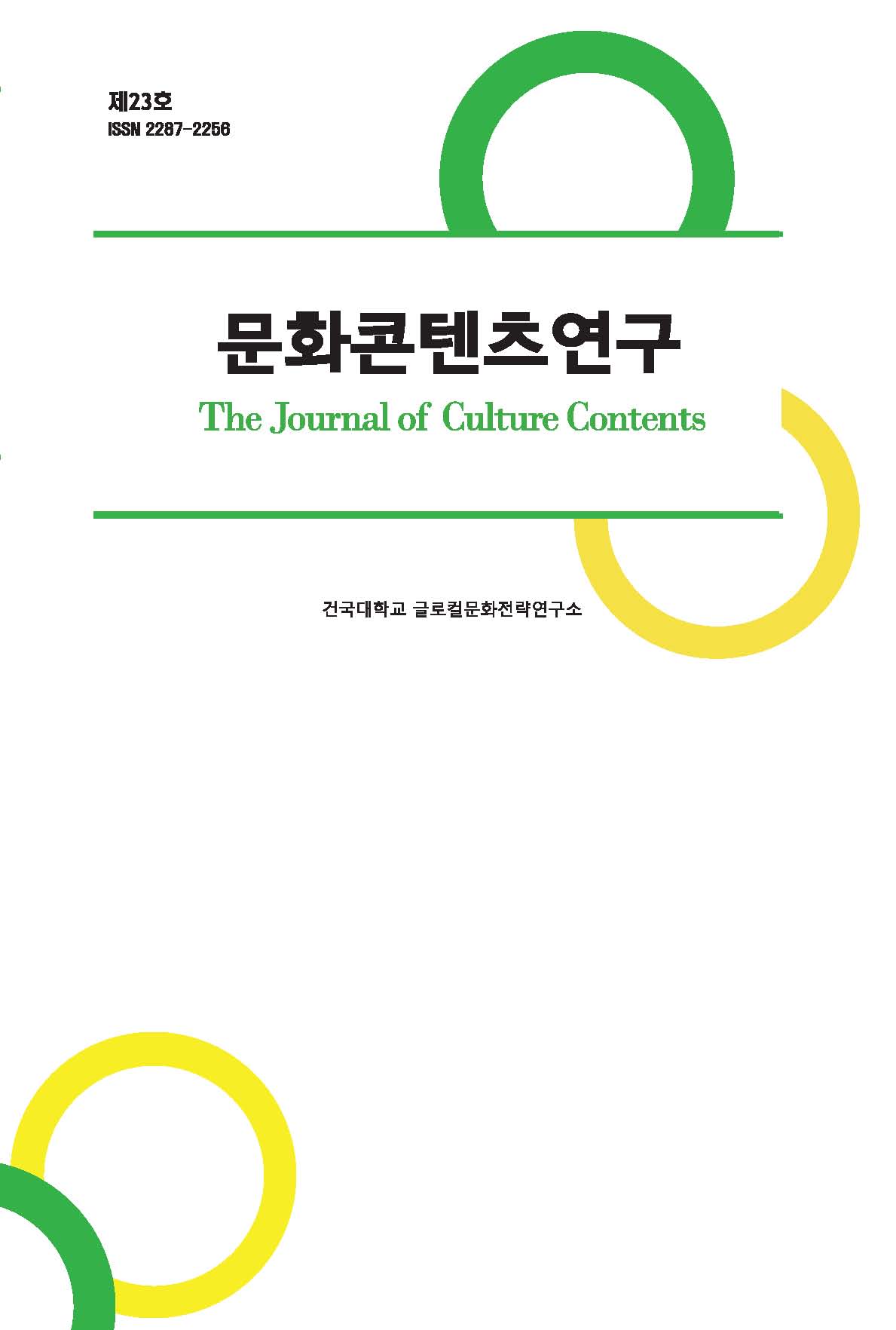Research Article
Abstract
References
Information
This study intends to suggest the meaning and utilization plan of ‘Dokseodang’, which fostered talents from the Joseon Dynasty. To this end, this study intends to examine the meaning of the Dokseodang through literature research, to find out the status of the existing Dokseodang through field trips, and to suggest ways to use it.
There is an area where the origin of the Dokseodang, which fostered talent from the Joseon Dynasty, remains as a road name. This is ‘Dokseodang-ro’, which runs from Hannam Station Intersection in Hannam-dong, Yongsan- gu, Seoul to Eungbong 4-way Intersection in Haengdang-dong, Seongdong- gu. The road name of Dokseodang-ro comes from ‘Dongho Dokseodang’ located in Dumori, Duseong-myeon (currently Oksu-dong, Seongdong-gu, Seoul).
As a result of reviewing the previous study of the Dokseodang, we found some implications. As the institution that lasted for about 340 years from Sejong to Yeongjo, the king announced the importance of reading as a philosophy for the administration of the state and actively practiced it. The fact that the Dokseodang functioned as a library where good books gathered, and that talented people had the spatial characteristics of reading and writing in the best environment. It is that talented people who read books at Dokseodang contributed to the development of the knowledge culture of the time by writing books, and that the country placed great importance on nurturing excellent talent.
Through the field trip where Dokseodang is actually located, we looked at how the Dokseodang is being preserved and how the succession of Dokseodang is progressing. It is unfortunate that the local governments that had the Dongseodang are not succeeding and developing the spirit of reading culture. Seoul’s Eunpyeong-gu (Jingwansa), Jongno-gu (Jangui-sa), Yongsan-gu (Namho Dokdang), and Seongdong-gu (Dongho-Dangseodang) in Seoul, where the Dangseodang was used, only in Seongdong-gu. At present, the appearance of Dokseodang remains only the name of Dokseodang-ro, and the unique function and meaning of Dokseodang has disappeared. It is necessary to create an environment where local people can share their minds about reading culture by using the historical meaning of Dokseodang. In particular, as the construction of apartments, etc., have led to the development of our apartments, we must continue to seek to connect cultural heritage with quality of life in that we are not developing our traditional cultural history properly.
본 연구는 조선시대 인재를 길러낸 ‘독서당(讀書堂)’의 독서문화사적 의미와 현대적 활용 방안을 제언해 보고자 한다. 이를 위하여 문헌 연구를 통하여 독서당의 의미를 고찰해 보고, 현존했던 독서당이 어떤 위상을 가지고 있는지 현장 답사를 통하여 알아보고 활용 방안을 제언하고자 한다.
조선시대의 인재를 길러냈던 독서당의 유래가 도로명으로 남아 있는 지역이 있다. 서울특별시 용산구 한남동 한남역교차로에서 성동구 행당동 응봉사거리까지 이어지는 ‘독서당로’이다. 독서당로의 도로명은 한성부 두모방 두모리(현 서울특별시 성동구 옥수동)에 위치했던 동호독서당(東湖讀書堂)에서 유래한다.
독서당에 대한 선행연구를 고찰한 결과 몇 가지 시사점을 발견하였다. 세종에서 영조까지 약 340년간 존속했던 기관으로 왕이 국정운영을 위한 철학으로서 독서의 중요성을 알리고 적극적으로 실천했다는 점이다. 독서당은 좋은 책이 모이는 도서관의 기능을 했으며, 인재들이 최고의 환경에서 책을 읽고 글을 쓸 수 있는 공간적 특성을 가졌다는 점이다. 독서당에서 책을 읽는 인재들이 책을 집필하여 당시의 지식문화 발전에 기여했으며, 국가가 우수한 인재양성을 매우 중요시 했다는 점도 특징이다.
독서당이 실제 위치한 현장을 답사하여 독서당이 어떤 형태로 보존되고 있는지, 독서당의 계승 발전이 어떻게 되고 있는지 살펴보았다. 독서당이 있었던 지자체들이 독서문화의 정신을 계승 발전시키지 못하고 있다는 점은 아쉽다. 독서당으로 활용되었던 곳은 진관사, 장의사, 남호독서당, 정업원, 동호독서당, 한강별영이다. 표석만 세우는데 그치지 않고 독서당의 역사적 의미를 활용하여 지역민들이 독서문화에 대한 정신을 공유할 수 있는 정책으로 이어져야 한다. 특히 토건 개발로 인해 아파트 등이 들어서면서 우리의 전통문화 역사를 제대로 발전시키지 못하고 있다는 점에서 문화적 유산을 현대인의 삶의 질과 연결시키는 다양한 모색이 요구된다.
- 김기덕, 『한국 전통문화와 문화콘텐츠』, 북코리아, 2007.
- 김기덕·정윤희, 「문화융성과 출판」, 『문화콘텐츠연구』, 제3호, 2013.
- 김민주, 『나는 도서관에서 교양을 읽는다』, 카모마일북스, 2019.
- 김상기, 「독서당(호당)고」, 『진단학보』, 17호, 1955.
- ______, 「독서당(호당)의 유래와 변천」,『향토서울』, 4권, 서울특별시역사편찬위원회, 1958.
- 김선우, 「독서당의 유래와 그 위치에 관한 고증」, 한양대학교 석사학위논문, 1988.
- 김중권, 「광해군조의 사가독서에 관한 연구」, 『서지학연구』, 22권, 2001.
- ______, 「선조조의 사가독서에 관한 연구」, 『서지학연구』, 21권, 2001.
- ______, 「16세기 한강에서의 연회와 시회」, 『한국시가연구』, 9권, 2001.
- 김진형, 「지자체 문화콘텐츠의 멀티유즈화 현상과 지역문화적 가치」, 『인문콘텐츠』, 제32호, 2014.
- 박은순, 「16세기 독서당계회도 연구」, 『미술사학연구』, 212호, 1996.
- 서범종, 「조선시대 독서당의 교육학적 연구」, 고려대학교 박사학위논문, 2004.
- 서울특별시편찬위원회, 『서울의 누정』, 2012.
- 오성탁, 「사가독서제도가 교원 파견연수제에 주는 정책적 함의」, 한국교원대학교 석사학위논문, 2004.
- 유동환, 「인문지식 기반 창작소재 서비스 모델 연구」, 『인문콘텐츠』, 제36호, 2015.
- 유영초, 「길 문화콘텐츠의 생태학적 해석: 경기옛길을 중심으로」, 『문화콘텐츠연구』, 15호, 2019.
- 이병민, 「창조경제시대 창조적 환경과 지역발전의 의미」, 『문화콘텐츠연구』, 2013.
- 이정진, 「전통문화콘텐츠의 이벤트 활용 연구」, 『인문콘텐츠』, 제39호, 2015.
- 이종묵, 「조선시대 서울의 문화공간과 한시; 사가독서제와 독서당에서의 문학활동」, 『한국한시연구』, 8호, 2000.
- ______, 「윤현과 16세기 동호독서당」, 『한국문화』, 70권 70호, 2015.
- 이현희, 「조선왕조 양반관료시대의 독서당고 ; 그 도서관적 기능과 인재등용예」, 『연구논문집』, 4·5, 성신여자대학교 사범대학 성신여자인문과학연구소, 1972.
- ______, 「조선왕조시대의 도서관 연구; 독서당에 대하여」, 『도서관』, 상·하, 국립중앙도서관, 1973.
- 장덕삼, 「조선전기 독서당에 관한 연구」, 『원광교육』, 6호, 1994.
- 정윤희, 「책문화생태계 관점에서의 출판정책, 도서관정책, 독서정책 비교연구」, 『문화콘텐츠연구』, 69-104쪽, 2019.
- ______, 「출판·독서생태계 구성 요소 분석을 통한 책문화생태계 모델 연구」, 건국대학교 박사학위논문, 2020.
- 최선경, 「조선시대 사가독서제를 모델로 한 대학 독서교육 프로그램의 성과와 과제」, 『사고와 표현』11권 1호, 2018.
- 허 겸, 「독서당의 건축공간에 관한 연구」, 명지대학교 석사학위논문, 2002.
- 국가법령정보센터(www.law.go.kr) (검색일 2019년 8월 1일)
- 나무위키(https://namu.wiki/w/%EB%8F%85%EC%84%9C%EB%8B%B9%EB%A1%9C), (검색일 2019년 8월 1일).
- 성동구 독서당 인문아카데미센터(http://dokseodang.sd.go.kr/home.php? menu_id=thanks), (검색일 2019년 8월 12일).
- 수요미식회(http://program.tving.com/olive/olivewedfoodtalk) (검색일 2019년 8월 2일)
- 서울 세검정초등학교(http://segumjung.sen.es.kr/index.do) (검색일 2020년 6월 1일)
- 시민일보(http://www.siminilbo.co.kr/news/articleView.html?idxno= 480854#rs) (검색일 2019년 8월 2일).
- 진관사(http://www.jinkwansa.org/html/?pCode=504) (검색일 2020년 7월 14일)
- 국가문화유산포털(http://www.heritage.go.kr/heri/cul/culSelect Detail.do?VdkVgwKey=21,00050000,11&pageNo=1_1_1_0 (검색일 2020년 8월 22일)
- Publisher :Research Institute of Creative Contents
- Publisher(Ko) :글로컬문화전략연구소
- Journal Title :The Journal of Culture Contents
- Journal Title(Ko) :문화콘텐츠연구
- Volume : 19
- No :0
- Pages :31-57
- DOI :https://doi.org/10.34227/tjocc.2020..19.31



 The Journal of Culture Contents
The Journal of Culture Contents





